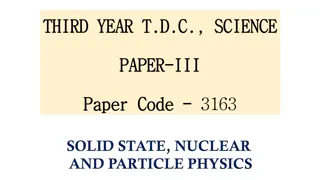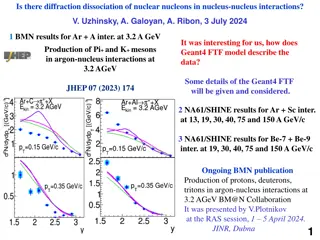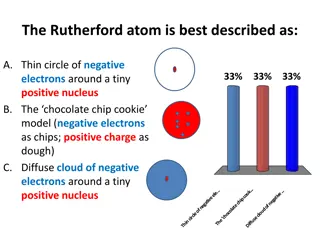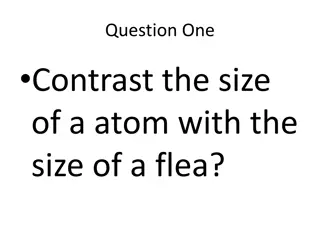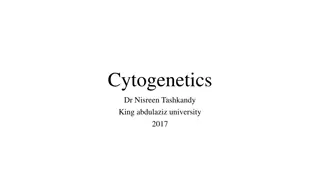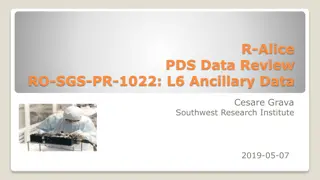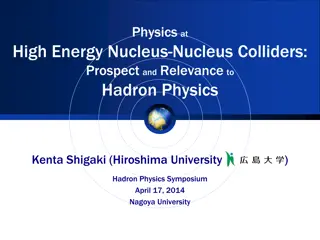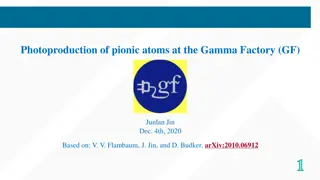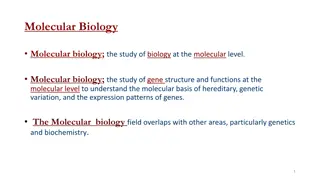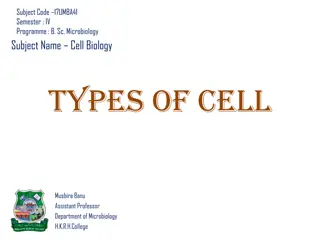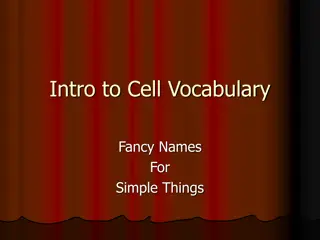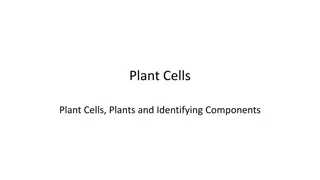Optogenetics
Optogenetics is a groundbreaking technique that involves using light-sensitive ion channels to control neuronal activity. By selecting opsins, targeting strategies, and delivery methods, researchers can modulate cellular function with precise temporal parameters. This method is suited for a range of experimental goals, from excitation to inhibition of cells, mapping complex circuitry, and testing potential therapies.
Download Presentation

Please find below an Image/Link to download the presentation.
The content on the website is provided AS IS for your information and personal use only. It may not be sold, licensed, or shared on other websites without obtaining consent from the author.If you encounter any issues during the download, it is possible that the publisher has removed the file from their server.
You are allowed to download the files provided on this website for personal or commercial use, subject to the condition that they are used lawfully. All files are the property of their respective owners.
The content on the website is provided AS IS for your information and personal use only. It may not be sold, licensed, or shared on other websites without obtaining consent from the author.
E N D
Presentation Transcript
Optogenetics An Introduction
Controlling Neurons with Light Using Light-Sensitive Ion Channels Genetically Transfected into specific cells What is Optogenetics?
1. Select an Opsin 2. Select Targeting Strategy 3. Select Light Delivery Method 4. Choose Temporal Parameters 5. Validation Designing Optogenetic Experiments
Suited to Experimental Goals Excitation or Inhibition of Cells Potentiated systems Mapping Complex Circuitry Determining Causality Matching the normal activation of the cell Bi-directional controls Testing potential Therapies 1. Selecting an Opsin
Multiple Optogenetic Tools: Rhodopsin variants
Ion Channel Cations Na+, Ca++ Excitatory Depolarization Light stimulates neuronal activity Channel Rhodopsin
Ion Channel Cations Na+, Ca++ Excitatory Depolarization Light stimulates neuronal activity Channel Rhodopsin
Ion Channel Anions Cl- Inhibitory Hyperpolarization Fast Light stimulates neuronal inactivity Halorhodopsin
Ion Channel Protons H+ Inhibitory Hyperpolarization Fast Light stimulates neuronal inactivity Bacteriorhodopsin Proteorhodopsin
Opsin-Receptor Chimaeras Membrane Bound Intracellular loops of Rhodopsin replaced with G protein loops E.g. Opto 2 or Opto 2 Activates specific 2nd messengers Excitatory or Inhibitory Light can match normal neuronal activity OptoXR
Soluble Receptors Mimics Signaling Cascades Cytoplasmic Optogenetics
Engineered Channelrhodopsin variants ChETA (E123 by Thr and Ala variants) ChIEF http://www.openoptogenetics.org/index.php?title=Channelrhodopsins#tab=Variants Evoke ultrafast firing frequencies for fast spiking neurons Help match the synchrony and patterning of the physiological neural code New Opsin Variants
Engineered Channelrhodopsin variants ChETA (E123 by Thr and Ala variants) ChIEF http://www.openoptogenetics.org/index.php?title=Channelrhodopsins#tab=Variants Evoke ultrafast firing frequencies for fast spiking neurons Help match the synchrony and patterning of the physiological neural code
Stabilized Step-Function Opsin variants Long lasting sub-threshold membrane depolarization Mimics potentiated systems Raising the resting potential near the threshold Enhanced sensitivity to Light E.g. ChR2 Asp156Ala + Cys128Ser Double mutant New Opsin Variants
Red-shifted Activation Wavelength Significantly more potent Increasing feasibility Combinatorial excitation Distinct patterns E.g. ChR1/VChR1 chimaera (C1/V1) New Opsin Variants
Local Cell Bodies And their projection sites Specific Cells within a group Recombinase or Promoter dependent Combinations of Opsins E.g. ChR2 to excite, NpHR to inhibit 2. Selecting a Target Strategy
Action at All Projections Action at Limited Projections 2. Target Local Cell Bodies
Action from Specific Local Cells Action at Parvalbumen (GABA) Cells 2. Target Specific Local Cells
Action from Specific Local Cells TH or Action at Tyrosine Hydroxylase (DA) Cells 2. Target Specific Local Cells
Cre = cyclization recombination Cre Recombinase is a site-specific DNA recombinase that recognizes specific sequences of DNA termed loxP loxP = locus of crossover of P1 phage Floxed = DNA flanked by loxP sites Targeting
Action from Terminals or Cells Action at specific Terminals 2. Retrograde Target Cells or Terminals
Stimulates operant responding (VTA) Enhances CCP (cocaine conditioned place preference) Via D1 Via OptoD1 = Gs via ACh interneurons Suppresses CPP (via D2) Produces Self-stimulation BLA NAc Opto D1R Optogenetics in the NAc







